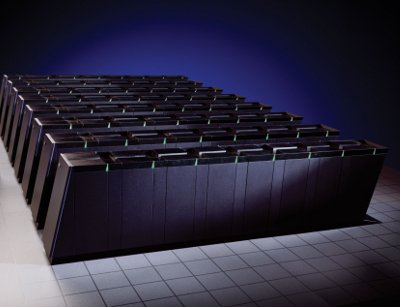While it was not the world's most powerful supercomputer, an HPC system built by IBM Research made it to the top of a list of the most energy efficient supercomputers in the world. The system's name is Blue Gene Q. IBM spokeswoman Joanna Brewer said it was a prototype of the company's next-generation Blue Gene supercomputers.
Green500, an organization that maintains a list of 500 most energy efficient supercomputers in the world, ranked Blue Gene Q number-one in the latest edition of its list released Thursday at SC10, a supercomputing conference in New Orleans, Louisiana. The prototype performs 1684 megaflops per watt and its Linpack performance (metric used to measure its overall computing muscle) is 653 teraflops.
The first deployment of Blue Gene Q will be at the US Department of Energy's Lawrence Livermore National Laboratory and Argonne National Laboratory in 2012, Brewer said. Both labs worked together with IBM to design the system.
Dona Crawford, associate director for computation at LLNL, said in a statement that the lab depended on HPC systems to fulfill its national-security mission. "By reducing energy costs, we are able to make high performance computing resources available to more researchers and their collaborators, advancing both science and the computing applications that make it possible," she said.
IBM's closest competitor on the energy-efficiency scale is the GSIC Center at the Tokyo Institute of Technology, whose supercomputer performs 948 megaflops per watt, with Linpack performance of 1.192 petaflops.
The Linpack metric used to assess computational performance of HPC systems is a contentious issue. In addition to the Green500 list, there is also a Top 500 list, which ranks systems according to computing power based on Linpack performance.
John Hengeveld, director of technical compute marketing for Intel's Data Center Group, told PCworld that the Top 500 ranking process overlooks about 80 percent of workloads supercomputers typically run. According to Netlib, Linpack is a "collection of Fortran subroutines that analyze and solve linear equations and linear least-squares problems."
In its defense, Hengeveld noted that the metric "captures how well [you can] make lots of processors work in parallel on a single big problem." Linpack does not do well, however, with measuring a system's memory performance and reliability.

